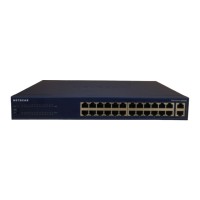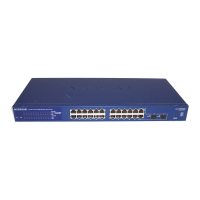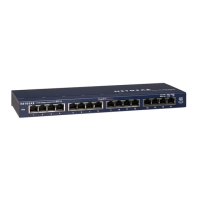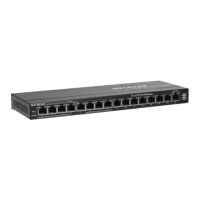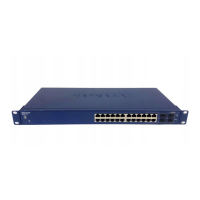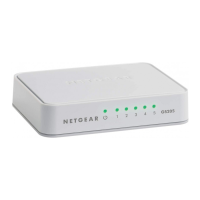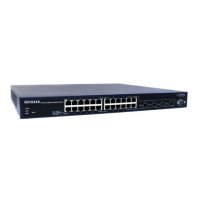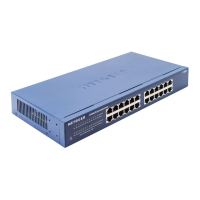Configure System Information
58
S3300 Smart Managed Pro Switch
Figure 34. SNTP Server Configuration
2. From the Server Type list, select the type of SNTP address to enter in the Address field,
which is either an IP address (IPv4) or hostname (DNS).
3. In
the Address field, specify the IP address or the host name of the SNTP server.
4. If
the UDP port on the SNTP server to which SNTP requests are sent is not the standard
port (123), specify the port number.
5. In
the Priority field, specify the order in which to query the servers.
The SNTP client on the device continues sending SNTP requests to different servers until
a successful re
sponse is received or all servers are exhausted. The request is sent to an
SNTP server with a priority value of 1 first, then to a server with a priority value of 2, and
so on. If more than one server has the same priority, the SNTP client contacts the servers
in the order that they appear in the table.
6. In
the Version field, specify the NTP version running on the server.
7. Click the Add but
ton.
8. Repeat
the previous steps to add additional SNTP servers.
You can configure up to three SNTP servers.
The SNTP Server Status table displays status info
rmation about the SNTP servers
configured on your switch. The following table describes the SNTP Global Status fields.
Table 15. SNTP Server Status Fields
Field Description
Address Specifies all the existing server addresses.
Last Update Time Specifies the local date and time (UTC) that
the response from this server
was used to update the system clock.
Last Attempt Time Specifies the local date and time (UTC) that this SNTP server was last
queried.
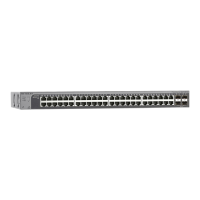
